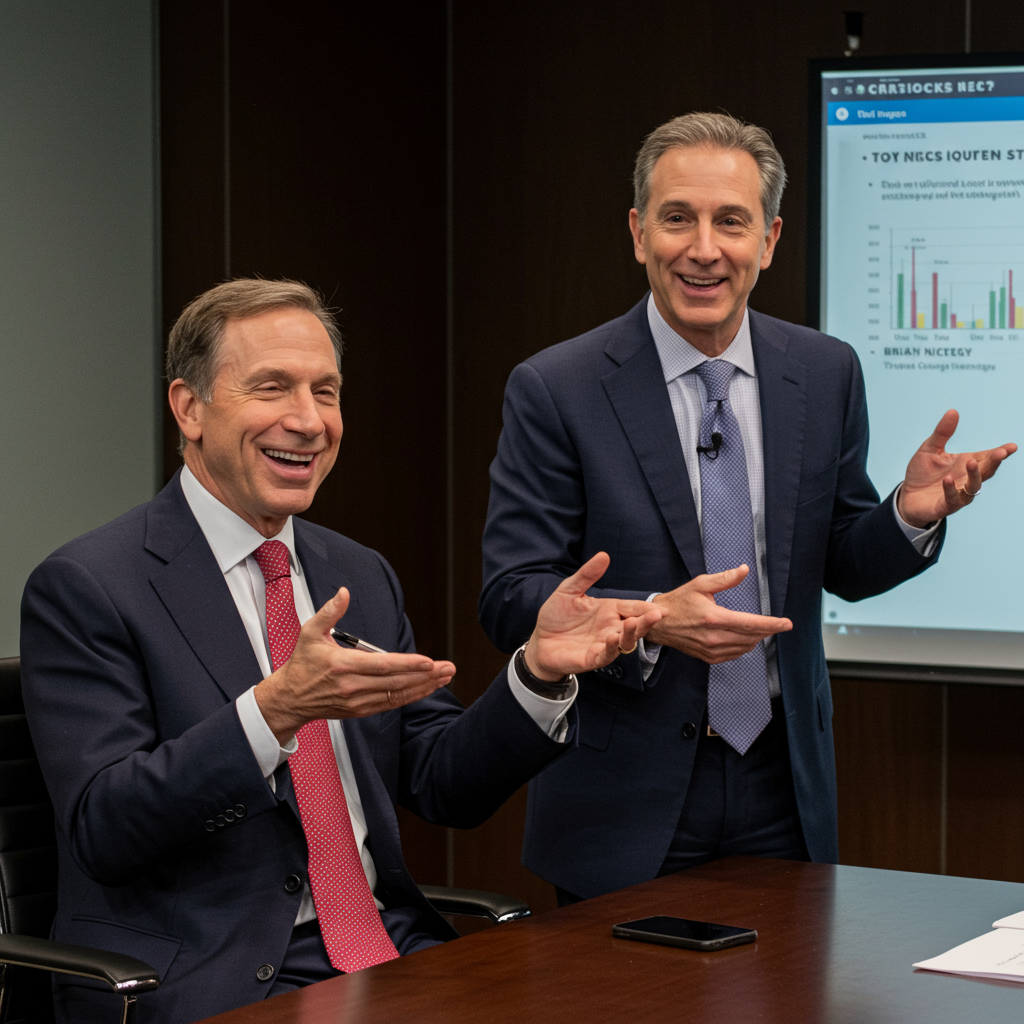US stock futures edged higher early Monday, signaling a positive start to the week for Wall Street as investors weighed key developments on both the legislative and trade fronts. This upward movement positioned major indices to potentially build on recent gains and test new record highs, aiming for a strong finish to the month and the second quarter.
At 6 a.m. ET, futures tracking the blue-chip Dow Jones Industrial Average had added 0.43%. S&P 500 futures saw a rise of 0.37%, while Nasdaq futures climbed 0.59%. These gains came as markets anticipated progress on a significant legislative initiative in Congress and reacted to evolving dynamics in global trade relationships.
Legislative Push: Focus on the “Big Beautiful Bill”
A primary driver of the market’s positive sentiment is the anticipation surrounding the potential passage of a major bill backed by the President. Referred to informally as the “One Big Beautiful Bill” or a “mega tax bill,” this package includes significant tax cuts and spending priorities favored by the administration. Investors are closely monitoring its journey through Congress, viewing potential tax reductions as a crucial factor that could boost economic growth and corporate earnings, potentially offsetting negative impacts from tariffs.
Over the weekend, the senate successfully navigated a critical procedural hurdle to advance this complex piece of legislation. While this cleared an important step, the bill still faces considerable challenges. It requires further votes in the Senate and must also gain approval in the House of Representatives before reaching the President’s desk. The path in the Senate is particularly narrow, given the slim majority held by the President’s party, meaning the bill will require support from nearly every member to secure passage. According to estimates from the Congressional Budget Office (CBO), the proposal, as currently structured, could add an estimated $3.3 trillion to the federal deficit over the next decade, a point of scrutiny for lawmakers. Despite these political and fiscal considerations, the President has reportedly pushed for the bill to be finalized swiftly, aiming for completion before the upcoming July 4 holiday. The Senate has scheduled a marathon session today to vote on numerous proposed amendments.
Navigating Complex Trade Dynamics
Alongside the legislative focus, developments in global trade continue to significantly influence market sentiment, presenting a mixed picture of progress and persistent risks. Investors initially cheered positive movement last week in trade talks with China. A notable breakthrough involved China agreeing to approve export applications for rare earth materials destined for the U.S. This step is significant because rare earths are crucial components in high-tech manufacturing, including powerful magnets used in various industries, and China controls an estimated 90% of the global supply. Supply chain disruptions related to rare earth magnets had recently forced companies like Ford Motor to curtail some production, highlighting their strategic importance.
Further relief came from signals suggesting the administration might extend President Trump’s self-imposed July 9 deadline for countries to finalize trade deals or face higher tariffs. Treasury Secretary Scott Bessent had indicated Friday that this deadline could be flexible. However, President Trump offered a different perspective in an interview Sunday, stating he would likely not extend the pause and would instead simply inform countries of the tariff rates they would face, suggesting this would be “the end of the trade deal.” This conflicting messaging creates uncertainty around future tariff actions.
Shifting Dynamics with Canada
Trade tensions with Canada, a major trading partner for the U.S., also saw a rapid evolution. Late last week, President Trump abruptly announced the termination of trade talks with Canada, specifically citing Canada’s planned digital services tax targeting U.S. tech companies as the reason. He threatened to announce new tariffs on Canada within days. This news initially caused a dip in stock prices. However, the situation shifted over the weekend. Canada decided late Sunday to scrap the controversial digital services tax, a move seen as an effort to revive stalled trade negotiations with the U.S. This latest development is contributing to the renewed sense of optimism in markets today, particularly benefiting shares of major U.S. technology companies.
Broader Market Factors and Economic Watchpoints
Beyond the immediate catalysts of the tax bill and trade news, several other factors are shaping the market landscape. Expectations for potential interest rate cuts from the Federal Reserve (Fed) this year have been increasing, partly fueled by recent soft economic data and speculation about the potential for a more dovish stance from the central bank. Investors are closely watching for signals from Fed officials this week. Fed Chair Jerome Powell is scheduled to speak at a European Central Bank forum on Tuesday, and other officials, including Atlanta Fed President Bostic and Chicago Fed President Goolsbee, have remarks scheduled for Monday.
The trading week is shorter than usual due to the upcoming Fourth of July holiday, with markets closing early on Thursday and remaining closed on Friday. Despite the shortened week, it is packed with important economic data releases that could provide further insights into the health of the U.S. economy and inform the Fed’s decisions. Key reports include the Chicago PMI data on Monday, the Institute for Supply Management’s manufacturing index and the Labor Department’s job openings report on Tuesday, ADP’s private-sector payroll report on Wednesday, and weekly unemployment claims alongside the crucial monthly jobs report on Thursday.
Despite the current push towards record highs, the market has experienced considerable volatility throughout the first half of the year. Reports suggest that the S&P 500, Nasdaq, and Dow are collectively on track for their weakest first-half performance since 2022, highlighting the complex and often contradictory pressures shaping market trends. In related news, recent positive results from the Federal Reserve’s annual “stress tests” for major U.S. banks have bolstered confidence in the financial sector, indicating that large banks are well-positioned to withstand severe economic downturns and potentially paving the way for increased capital distribution to shareholders.
Frequently Asked Questions
Why are US stock futures trading higher today?
US stock futures are trading higher primarily due to optimism surrounding progress on a significant tax cut bill in the Senate and positive developments in trade relations. The Senate cleared a procedural step for the bill over the weekend, boosting hopes for its passage. Additionally, positive trade news with China regarding rare earths and Canada’s decision to scrap a controversial digital services tax are contributing to improved market sentiment.
What key trade developments are currently influencing market sentiment?
Several trade issues are impacting markets. A breakthrough in rare earth exports from China to the U.S. is viewed positively. The approaching July 9 tariff deadline creates uncertainty, especially with conflicting signals from the administration regarding a potential extension. Most recently, Canada’s decision to eliminate its planned digital services tax is seen as a significant step toward resolving a point of contention and reviving stalled trade talks with the U.S., particularly benefiting technology stocks.
What are the next steps for the proposed tax bill in the Senate?
After clearing a key procedural hurdle, the tax bill faces further votes in the Senate, including a marathon session scheduled for today to consider numerous amendments. The bill requires sufficient support from the President’s party, which holds a slim majority, to pass the Senate. Following Senate approval, it would need to be passed by the House of Representatives before it can become law. Challenges include political negotiations to secure enough votes and considerations around its estimated impact on the federal deficit.
Markets remain keenly focused on legislative progress in Washington and the evolving global trade picture. The week ahead, shortened by the holiday, promises further data and commentary that could provide clearer direction for investors navigating this dynamic environment.




